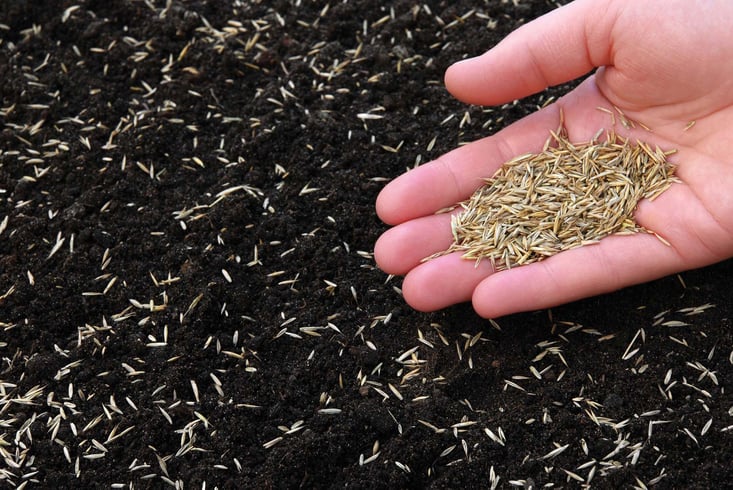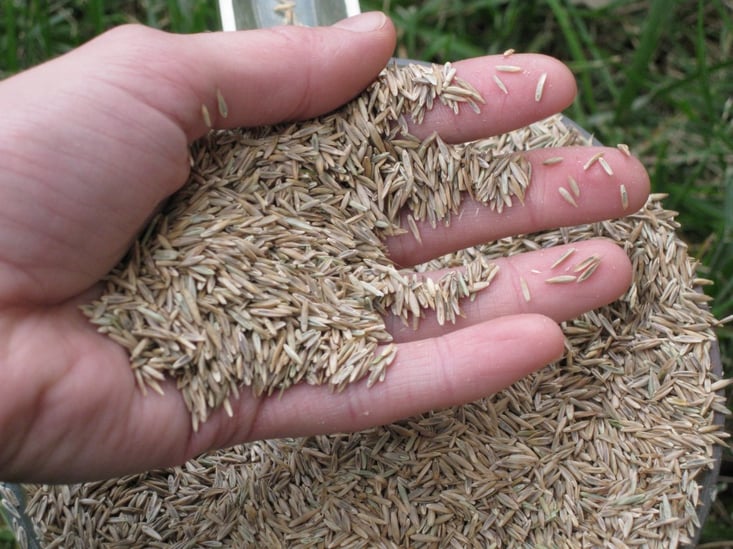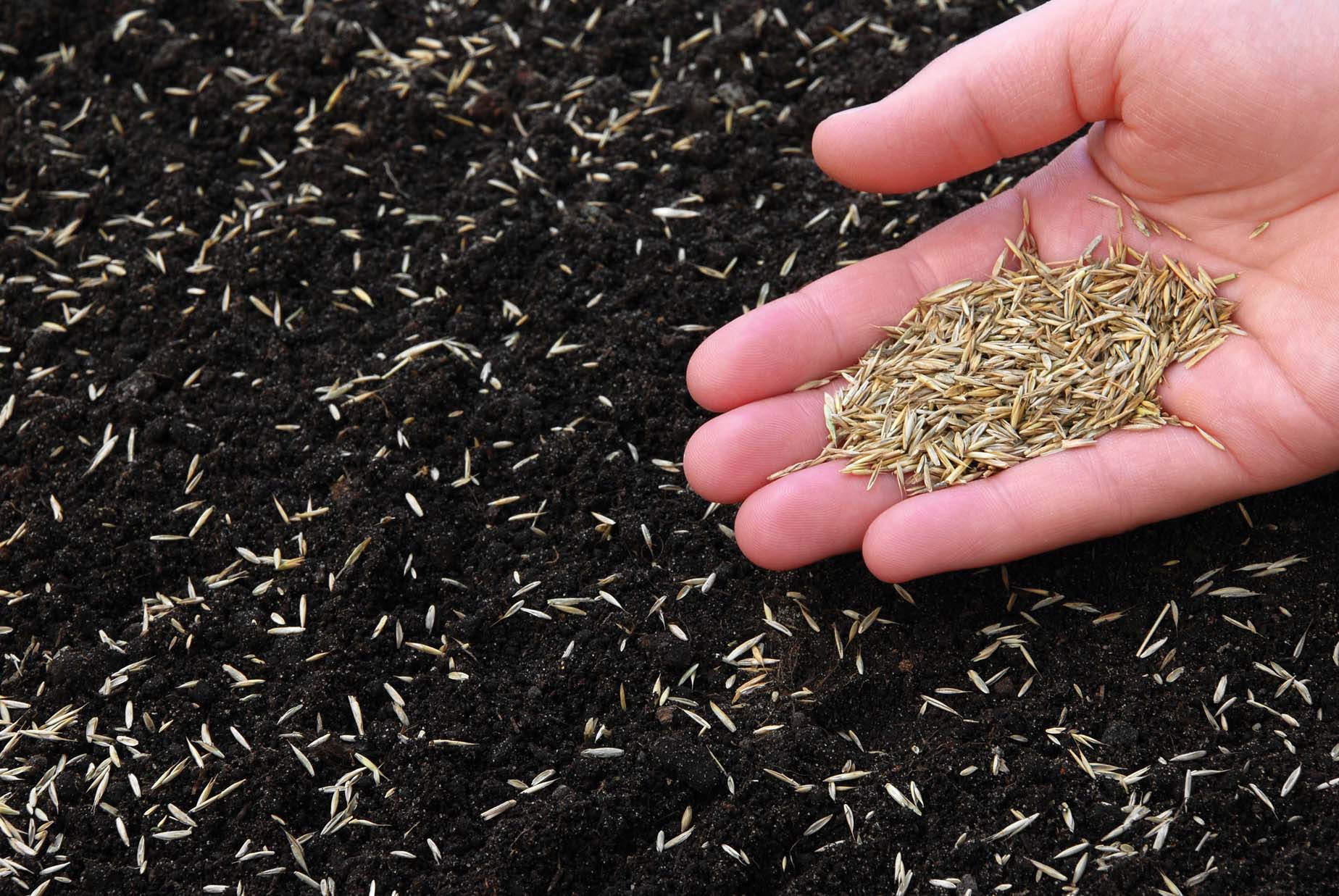
After a rough and tough Summer, your lawn might be looking a little under the weather. Thin, weak, and bare spots in a lawn are a common concern for homeowners at this time of year, but with Fall at our doorstep, now is prime time to begin addressing some of the issues you might have with your grass.
Good cultural practices like mowing and watering are always important, but after the effects of heat and drought stress, insect infestations, and turfgrass diseases, sometimes you need to put in that extra bit of effort to get your lawn looking great again. Overseeding is an excellent way to get your grass back on track, and Fall just so happens to be the ideal time to do it.
What Is Overseeding?
Overseeding refers to the process of applying fresh new grass seed over weak, thin, and needy areas of you lawn. It is the most effective when a hybrid seed is used; that is, a combination of a couple of seed varieties that are matched to your climate, soil type, and maintenance habits.
Overseeding introduces new endophyte enhanced grass species that require less water, less fertilizer, resist insects, disease pressures, and discourage weed infestations. Even if your lawn is looking healthy, it's recommended to overseed your lawn annually.
Benefits of Overseeding
Overseeding revitalises a lawn that has been damaged by a multitude of factors, including weather conditions, insects, or diseases. It helps renew the health and vitality of your lawn, and replacing weak areas with new seed works to replenish missing nutrients.
Those weak patches in your lawn tend to take away nutrients from the rest of your grass in an attempt to renew itself, which unfortunately creates a risk for the rest of your lawn. Addressing the weak areas of your lawn will not only help repair those sections, it'll give your entire lawn a better chance to thicken up and thrive.

Choosing The Right Grass Seed
Speaking to the experts is the best way to know what the right seed for your lawn is, but if you're planning on doing it yourself, do your research and ask the right questions. When it comes to overseeding, there are some key questions you should ask before getting to the cash register at your local nursery;
- What kind of traffic does your lawn get? Knowing what sort of conditions your grass needs to withstand will help you pick the right seed. Some turfgrasses can handle kids playing soccer on the lawn every day after school, but others can't handle much traffic at all.
- How much sun and shade does your lawn get? Some turfgrasses need sun, while others prefer shade in order to thrive, so it's essential to consider this before choosing a seed.
- How much time and money do you want to invest? Not all grass seeds are created equal; some types of grass seed are a little more work than others. Some thrive better with regular fertilizer, while some require moderate maintenance.
The Overseeding Process
Before you go ahead and drop down a bunch of seed, you need to get the rake out and rid of any dead grass. After that, you'll need to ensure your soil isn't compacted, otherwise everything you're about to do next will be pointless. Getting a core aeration prior to overseeding is a great way to make sure your soil isn't compacted, plus, it'll enhance the benefits of overseeding.
Next, you'll want to apply fertilizer, manure, or compost to the area you're about to overseed. This will help replenish the nutrients stolen by the dead grass. Using a rake, level out the soil to give yourself a smooth foundation.
Now it's time to lay down the seed and finish up with topdressing; a nutrient-rich covering of organic compost that helps ensure ideal seed to soil contact and quicker germination and establishment.
When Is The Best Time to Overseed?
Overseeding is best done in the Fall or in the Spring, when the grass is actively growing. Doing it during these seasons will give you enough time for the grass to grown before extreme weather hits.
Follow us on Facebook for daily lawn care tips & tricks. Plus, check us out on our newly launched Pinterest page for even more ideas!







